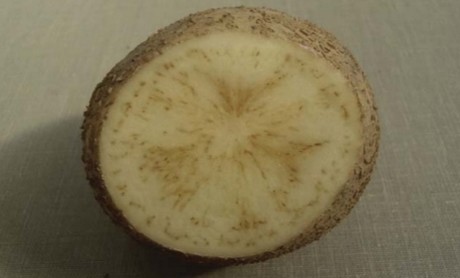 ase in potatoes is currently being managed by controlling the potato psyllid with insecticides. But one Texas A&M AgriLife Extension Service specialist is trying to manage the disease symptoms with alternative methods and chemistries.
ase in potatoes is currently being managed by controlling the potato psyllid with insecticides. But one Texas A&M AgriLife Extension Service specialist is trying to manage the disease symptoms with alternative methods and chemistries.French is conducting his studies using alternative controls as a part of the U.S. Department of Agriculture-National Institute of Food and Agriculture-sponsored Zebra Chip Speciality Crop Research Initiative. “We are looking at three different approaches: bactericides, plant defence response and plant nutrients,” he said. “We are trying to alleviate the disease symptoms on tubers and throughout the plant, and improve plant health so that any negative impacts the psyllid, bacterium, disease or pesticide use are having on the plant can translate into improved yields.”
His efforts to control the pathogen using foliar applications of a bactericide has had good results for two years when psyllid populations in the field and the instances of zebra chip were significant, French said. A significant increase in yield, 30 percent, was recorded in potato yields.
But French said the problem is the next step – getting them labelled for use on potatoes. “Bactericides for potatoes are labelled only for seed treatments, although foliar applications in the field are allowed on some tree fruits crops. If we can include bactericides in a program that can minimize insecticide use, then this could be part of an integrated disease management approach,” he said.
In his approach to the plant defence response, French said he is trying to produce something like a systemic acquired resistance or induced systemic resistance response from the potato against the pathogen.
The third and last approach he is studying is using plant nutrients to offset the damage caused by the psyllid or the pathogen and any nutrient imbalances that result, or any phytotoxicity that might occur after applying pesticides, French said.





